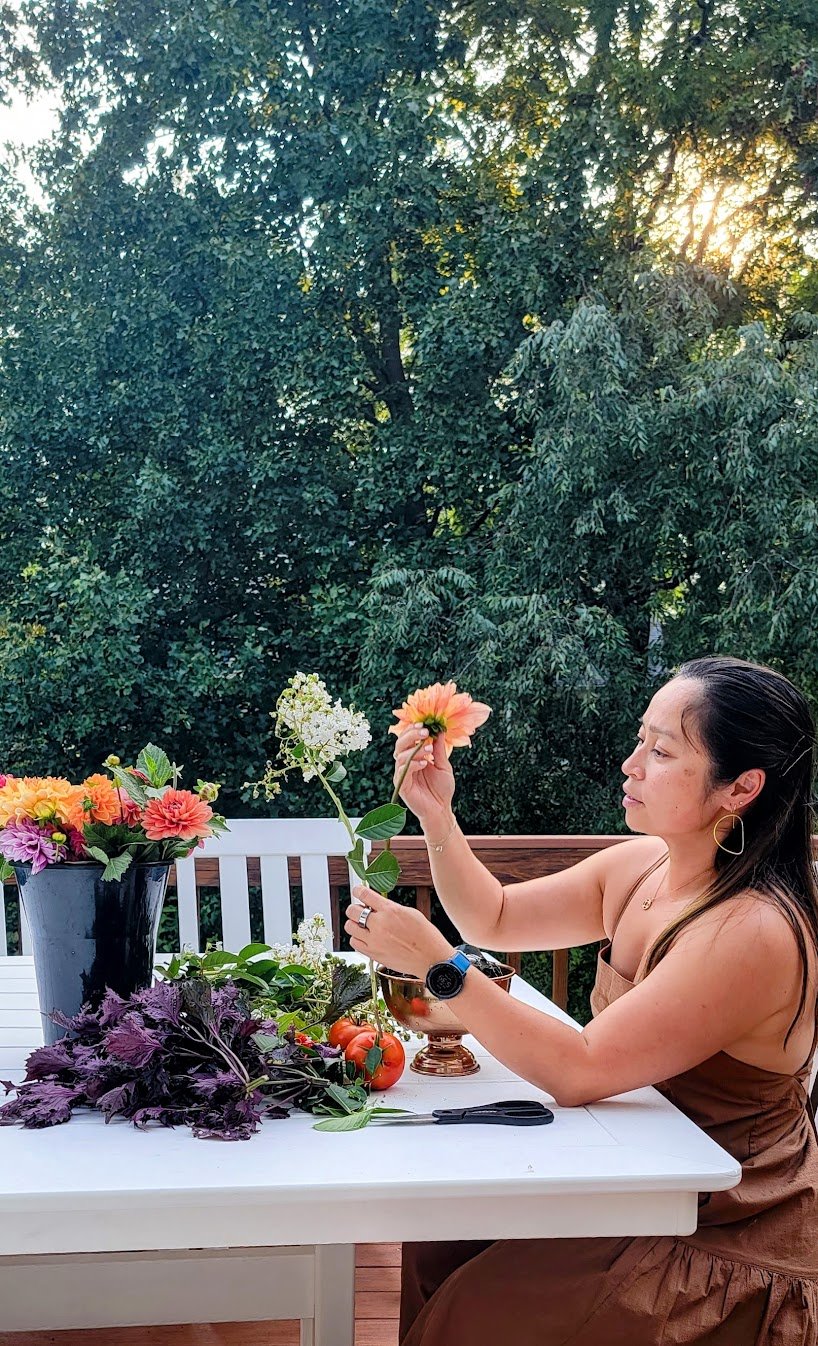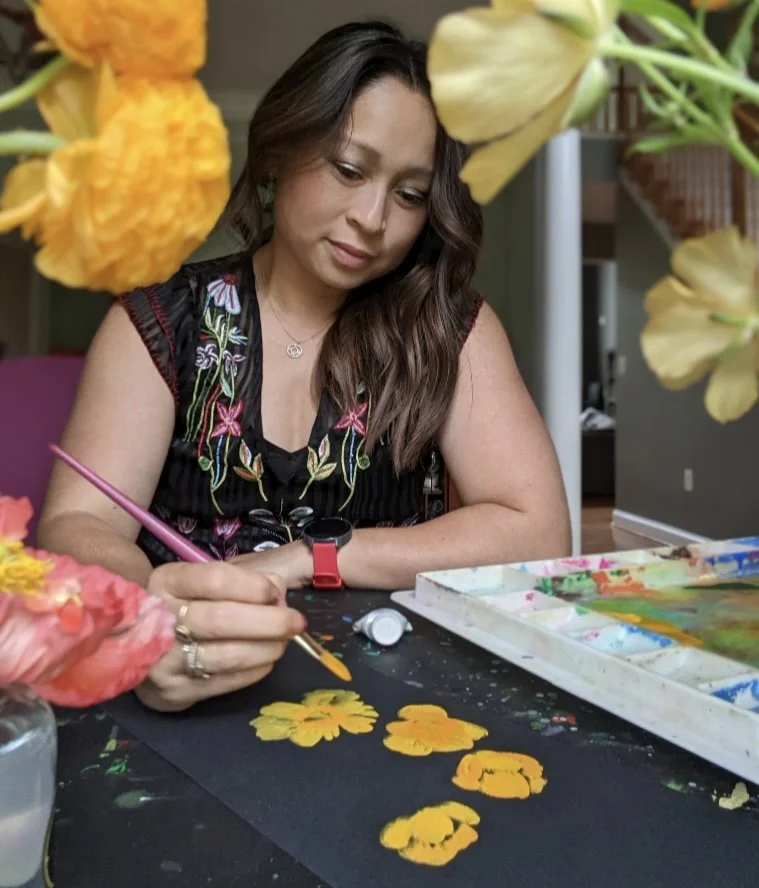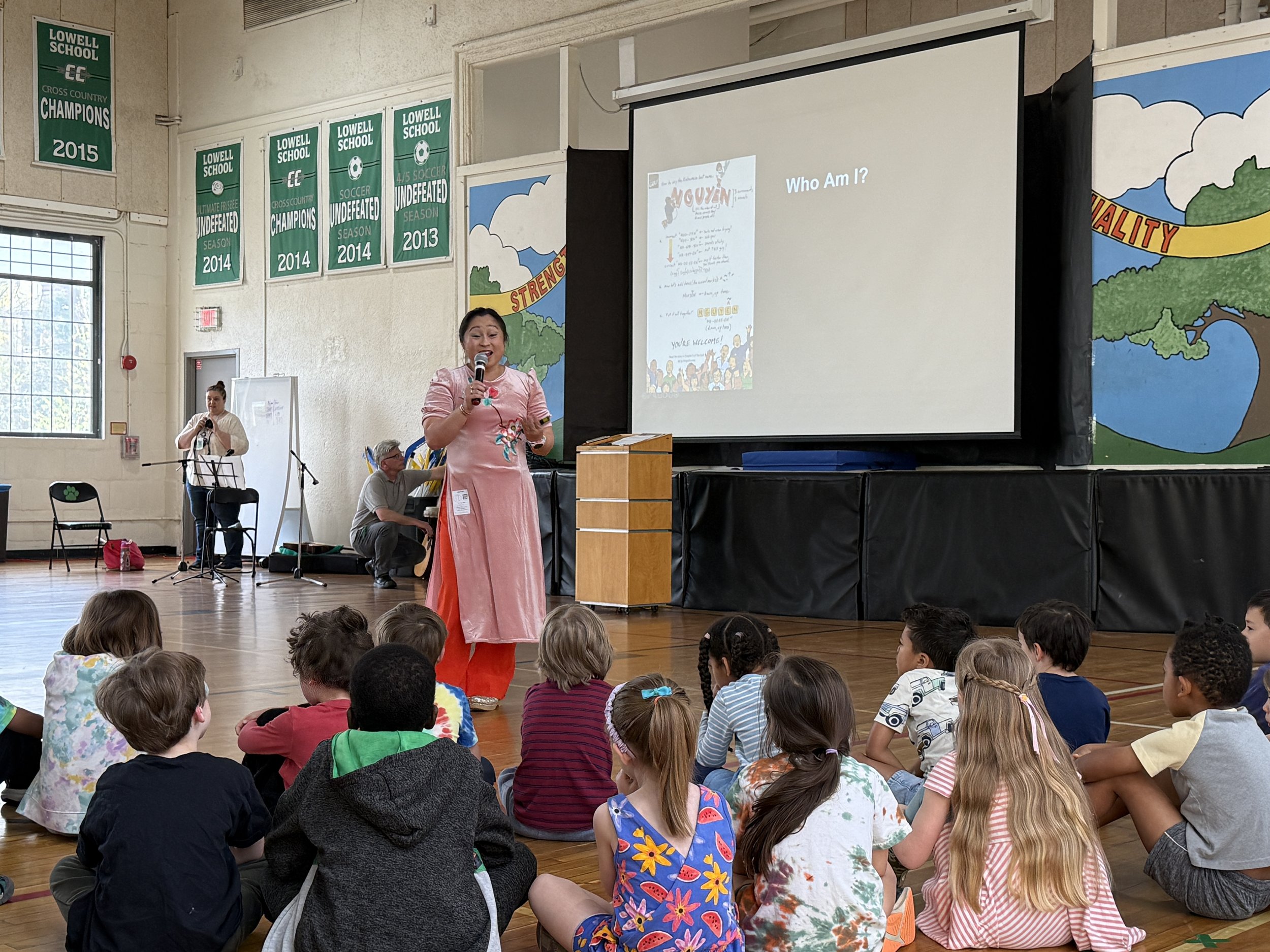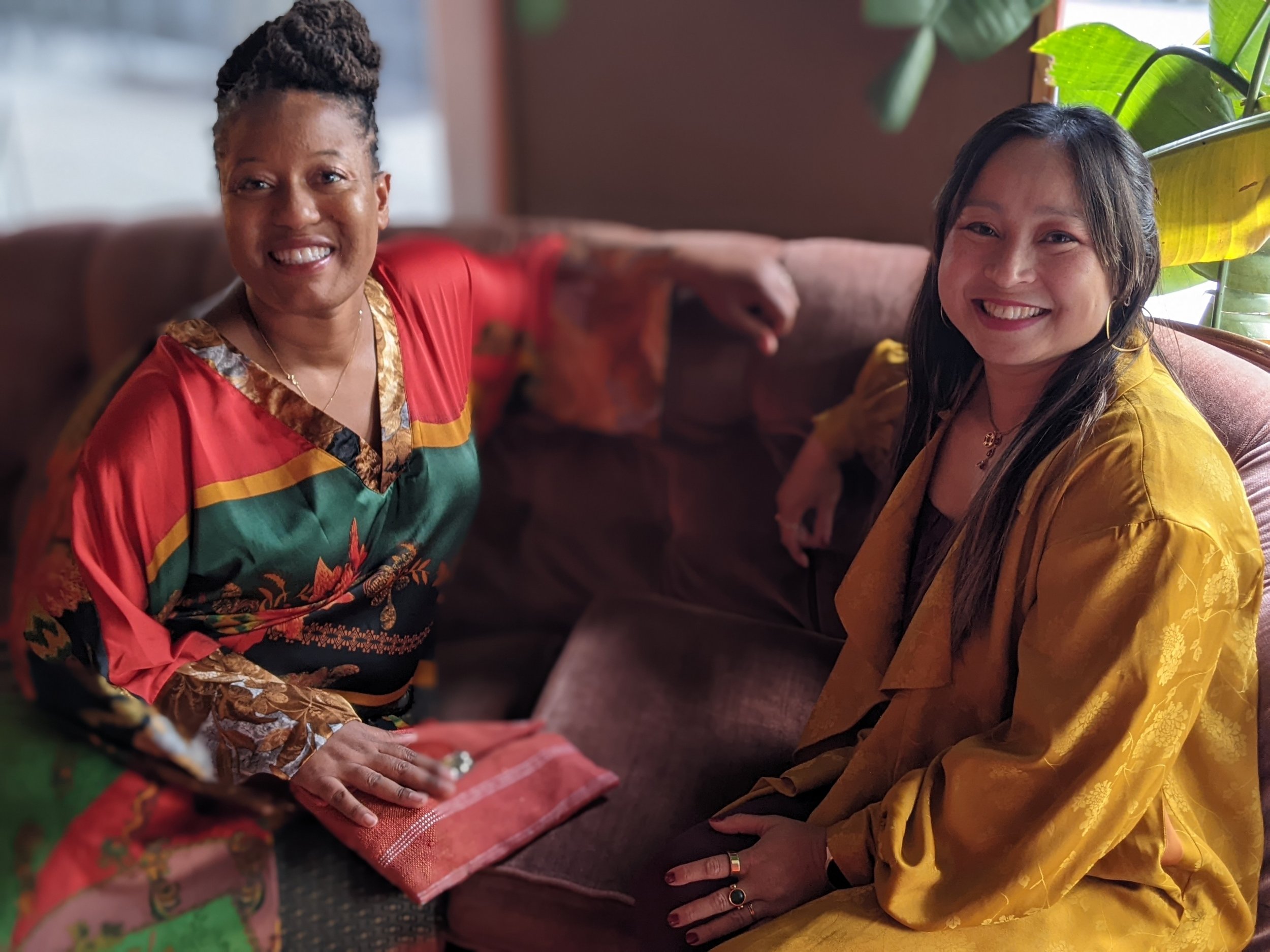Vietnamese writer, artist, activist, and educator
What does it mean to be an Asian American woman?
“The United States themselves are essentially the greatest poem.” — Walt Whitman.
The Greatest Poem — inspired by one of America’s greatest poets Walt Whitman — is an installation featuring poetry, film and a 20-foot flower garden mural created by artist and poet Thu Anh Nguyen. The installation features found poems written by Thu Anh using expressions of Asian American identity submitted to us by hundreds of AAPI women. Whitman’s claim stemmed from a belief that both poetry and democracy derive their power from their ability to create a unified whole out of disparate parts. Whitman’s claim stemmed from a belief that both poetry and democracy derive their power from their ability to create a unified whole out of disparate parts. Those who’ve descended from Asian immigrants comprise one of those disparate parts. However, there is no singular Asian American identity because the Asian American identity is also made of distinct parts. The Greatest Poem explores this complexity as Thu Ann continues writing found poems and adding them to the poetry wall.
Art in Community
For my mural at the Gallery Y in Washington DC, I engaged the community by soliciting answers to the question, “What does it mean to be an AAPI woman,” and then I created found poems using the responses. Those poems were displayed next to my large floral mural that represented the variety and beauty of the Asian diaspora.As a social justice activist and facilitator, I have used art to engage the community in thinking about injustice, and solutions to it. I lead art activities that ask people to think about social class and their gender journeys. Art allows people to tell stories in ways that maybe words have failed them in the past.
Poetry
There is nothing that I have done or accomplished, or will do or accomplish, that isn’t deeply related to that story of how I began: born in Vietnam, raised in the swamps and beaches of Florida. English as a third language, and hard-won. Switching back and forth between all of the identities and homelands.
Being a refugee means that you have already crossed countless borders, physical and literal, and many other emotional and metaphorical ones. In order to survive these sometimes treacherous crossings, we have to be bridge-builders. We try to bring our old world with us into the new world, but as I ask in my poem “Mud,” can we really build a new land inside old people? My poetry is about the liminal spaces between the old and new, the Vietnamese and American, girl and woman.
Thu Anh Nguyen reads with Lesley Younge at Kramers’ inaugural poetry reading.
Workshop with Thu
I have given workshops at embassies, schools, and museums to participants of all ages from all backgrounds. Whether I am speaking at an assembly, facilitating discussions about art and activism, or teaching poetry and painting in classrooms, all of my engagements are interactive and deeply personal. At schools, I have spoken about Asian and Black Solidarity to celebrate the work of Dr. Martin Luther King, Jr. I have also spoken at many assemblies for AANHPI month. I have shared the history of art in making protest posters, and then worked with students to create their own protest posters.
When I create dialogue poems, I listen to stories about what it means to belong, and what it means to be American, or a woman, or Asian, and I sculpt lyrics from those conversations. My work is an exchange of stories. It depends so much on being in a just and whole relationship with my community, and that can only happen when we share our stories, and we really listen to one another.
Photo by María Fernanda

Thu is one of those creatives you dream of working with as a program coordinator. As an artist, her words make you reflect, make you reflect, make you cry, and make you laugh. Her heart radiates from her core and inspires you to slow down and see the beautiful parts of the world, even if they stem from paint.
— Demi Mohamed
Explore Projects
50 Years of HOPE and HAHAs Vagabond presents “50 Years of HOPE and HA-HAs,” the DMV’s first Vietnamese American art exhibition, celebrating the expansiveness of the diaspora. 2025 marks the 50-year anniversary of the end of the war in Vietnam. The mainstream perception of Viets has remained unchanged for decades, rooted in the suffering of war, yet nothing about our community is static.
In the 1967 speech “Beyond Vietnam,” Dr. Martin Luther King Jr. addressed the importance of understanding the Viet experience in saying, “we may learn and grow and profit from the wisdom of the brothers who are called the opposition.”
The exhibition features visual art, poetry, video art, zines and music by over 20 Viet artists including four zine collectives, offering counter narratives from the 1.5 and 2nd generation while uplifting the multi-cultural intersectionality of the diaspora. The theme of resilience is interwoven through joy, memorial, heritage, catharsis, solidarity, representation and community.
The exhibition title comes from Ocean Vuong’s poem, “The Last Dinosaur,” which asks how we can live better despite a destroyed past:
Oh wind-broke wanderer,
widow of hope & ha-has…
I was made to die
but I’m here to stay.
—Ocean Vuong
Hey, We Need To Talk, 2024 In this deeply divided era, one of the hardest things you can do is talk to someone who thinks differently from you. But that’s exactly what we need to do if we want to solve the social and political problems our country faces and if we want to create a society in which everyone flourishes. Strengthening our social bonds happens when we begin to care about each other again. That begins with a conversation. Philippa transformed the Crumpacker Gallery at the University of Michigan Museum of Art into a social sculpture, an artwork that becomes complete when human connections happen, where you can have honest, caring, common sense conversations. This artwork was inspired by the work of U-M Professor Jenna Bednar, who proposes four pillars of flourishing: community, sustainability, dignity, and beauty.
Vagabond Almost 50 years post-war, the Vietnamese-American narrative is still skewed. 13 Vietnamese creatives have decided to change this vision. Vagabond is a Zine featuring interviews and other work with those artists, poets, photographers, designers, and musicians in the DMV area. Co-created by Philippa Pham Hughes and Anthony Trung Quang Le, Vagabond challenges mainstream American beliefs on what it means to be Vietnamese-American through the counter-narratives of its writers. In addition to their interview contributions, each artist was commissioned to write a letter to their younger self as an act of self-care. Vagabond is a powerful reminder of how far the Vietnamese American community has come while serving as a vessel of education to the public. The Zine celebrates rich Vietnamese American excellence through art and healing, a radical act of self-love for both the artists and the community.
We Should Talk is a series of multi-media art installations and programs in which multi-disciplinary Asian American women artists create space to explore the nuances and complexities of what it means to be an Asian American woman. We Should Talk is led by curator and artist Philippa Pham Hughes and artists Xena Ni and Adele 이슬 Kenworthy in collaboration with Thu Anh Nguyen. We apply an aesthetic of care and delight to creating relational spaces in which we share deeply and honestly, learn from one another, explore, and grow together.
SEED (Seeking Educational Equity and Diversity) partners with communities, organizations, and institutions in bringing people together to learn through self reflection, build relationships through structured dialogue, and create change through systemic analysis.




